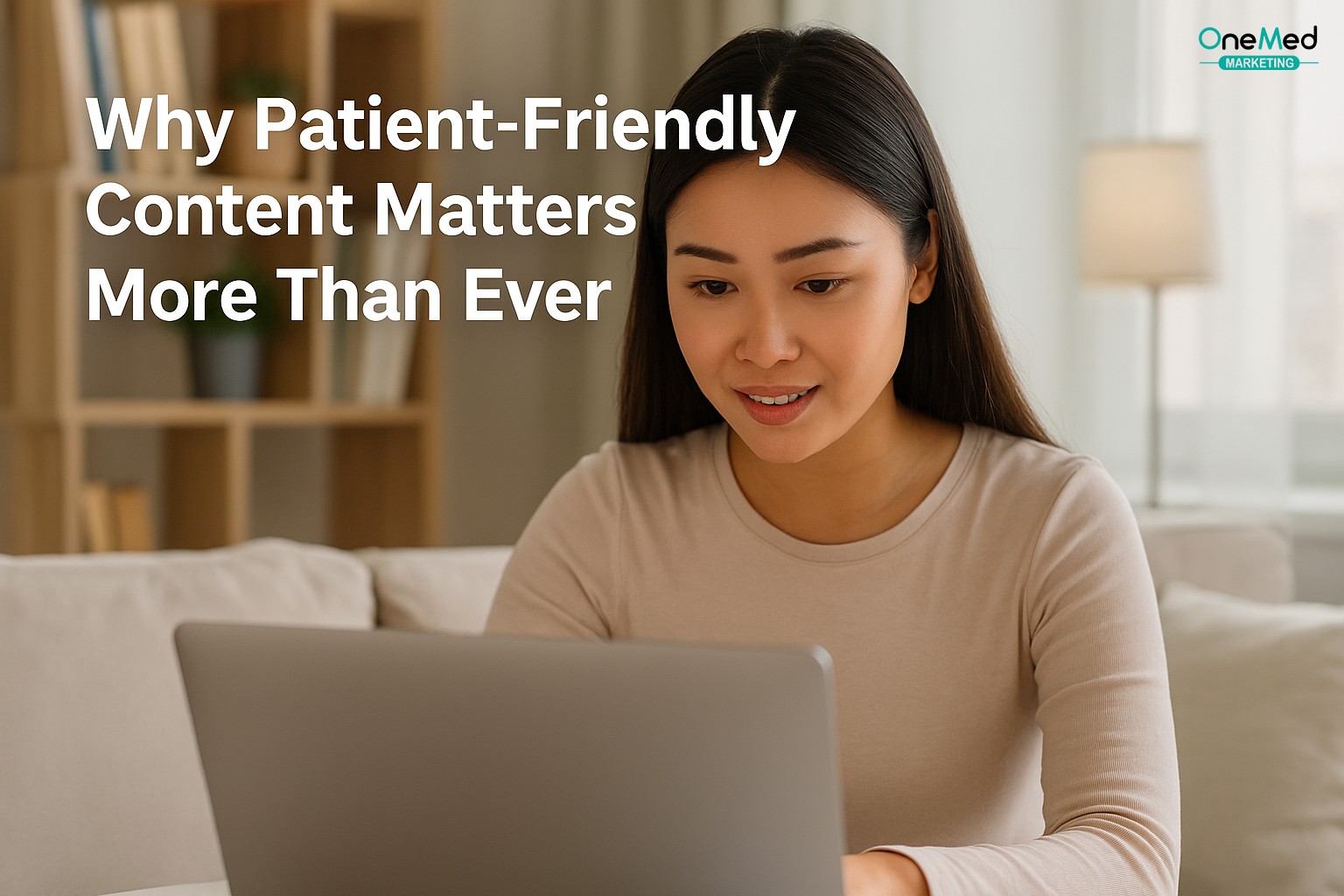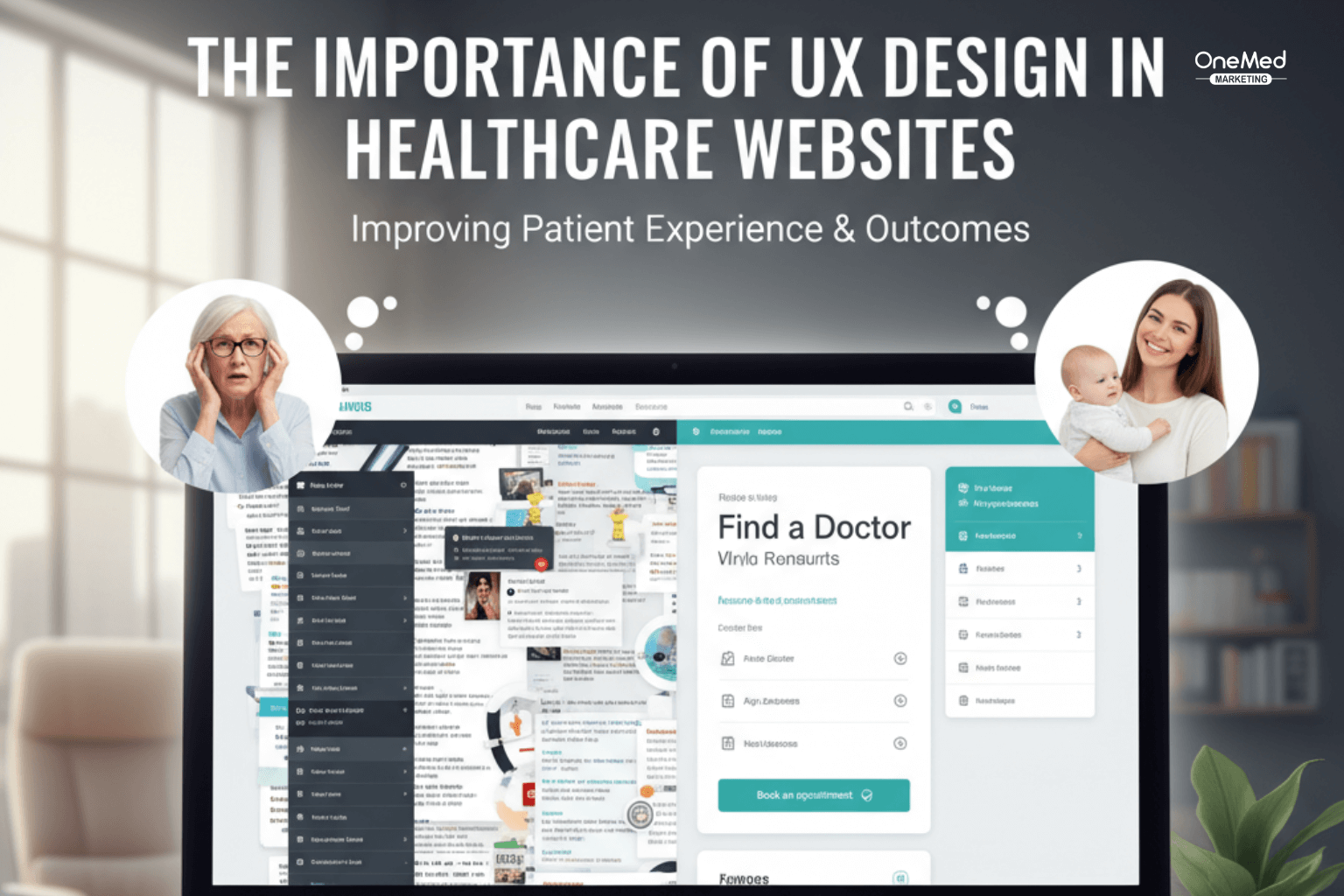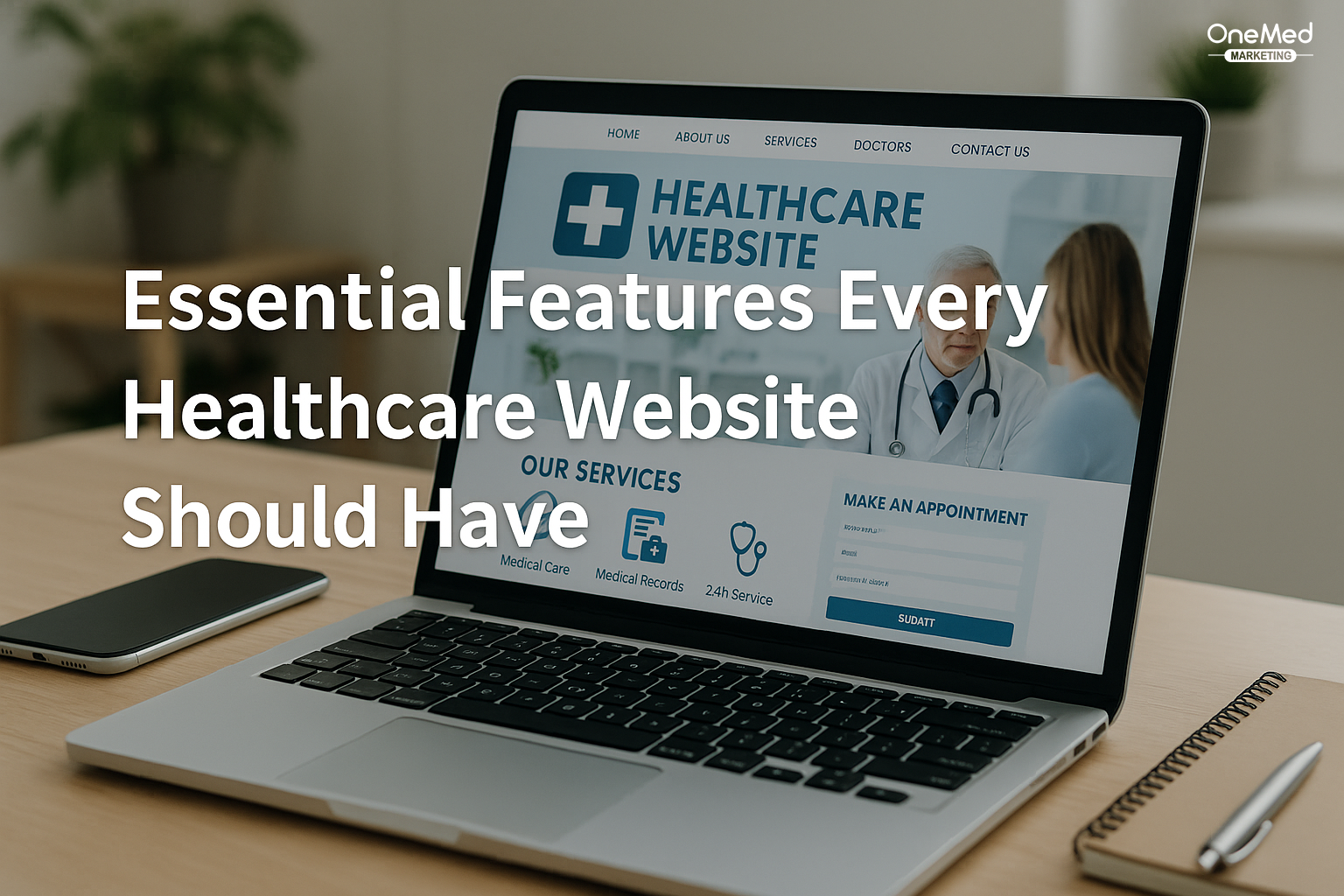- info@onemedmarketing.com
- 4th Floor, Nemours Building, 1007 North Orange St. , Wilmington, DE 19801, United States

Why Patient-Friendly Content Matters More Than Ever
Healthcare is built on trust. Patients rely on providers to explain conditions, treatments, and next steps in a way they can understand. But too often, medical communication is filled with jargon, long explanations, or complex documents that confuse rather than clarify. In a world where patients can find information everywhere—on websites, social media, or even AI tools—what they want most is content that feels clear, simple, and useful.
Patient-friendly content has become one of the most important parts of healthcare communication. It helps patients feel informed, builds confidence in providers, and improves outcomes because people are more likely to follow instructions they truly understand. In 2025, patient-friendly content is not optional. It is a must-have for every practice that wants to grow and build long-term trust.
In this blog, we will cover the following topics:
- What Is Patient-Friendly Content?
- Why Patient-Friendly Content Matters in 2025
- Key Elements of Patient-Friendly Content
- Benefits of Patient-Friendly Content for Healthcare Practices
- Challenges Healthcare Providers Face
- Best Practices to Create Patient-Friendly Content
- Future of Patient-Friendly Content in Healthcare
- Conclusion
- Frequently Asked Questions
What Is Patient-Friendly Content?
Defining patient-friendly content in healthcare communication
Patient-friendly content is information created with the patient in mind. It avoids technical terms, keeps explanations short, and focuses on what patients actually need to know. The goal is to give patients confidence and clarity so they can make decisions about their health without feeling lost.
The difference between medical jargon and simple explanations
Jargon can quickly create distance between providers and patients. For example, saying “myocardial infarction” may be medically correct, but “heart attack” is instantly understood. Using plain words ensures patients feel included in the conversation instead of excluded.
Why Patient-Friendly Content Matters in 2025
Patients are more informed but also more overwhelmed
Thanks to the internet, patients arrive at appointments armed with information—but not always accurate or reliable. When providers create patient-friendly content, they cut through the noise and provide trusted guidance patients can rely on.
The role of trust and transparency in healthcare communication
Trust grows when patients feel their providers are honest and clear. When practices use easy-to-understand content, it shows respect and transparency, making patients more likely to return and recommend the practice to others.
The impact on patient decision-making and loyalty
When patients understand their options clearly, they make better decisions. They are also more loyal to providers who take the time to explain things in a way they can grasp. This not only improves patient satisfaction but also strengthens the practice’s reputation.
Key Elements of Patient-Friendly Content
Using plain language patients can understand
Content should be written at about an eighth-grade reading level. Instead of “etiology of disease,” use “the cause of the illness.” Patients remember information better when it is simple and direct.
Clear formatting with headings, bullet points, and visuals
Patients rarely read long paragraphs. Breaking content into sections with headings, lists, and images helps them scan and find what matters most.
Including real examples that relate to daily life
Examples bring clarity. Telling a patient that cholesterol works “like grease in a pipe” is easier to understand than showing numbers alone.
Making digital content accessible on mobile devices
Most patients view websites on their phones. Mobile-friendly design ensures they can quickly find and understand information without struggling to zoom or scroll.
Benefits of Patient-Friendly Content for Healthcare Practices
Stronger patient engagement and satisfaction
When patients understand content, they ask better questions and feel more confident in their providers. This leads to higher satisfaction.
Fewer misunderstandings about treatment and billing
Confusion often leads to disputes or unpaid bills. Clear explanations reduce mistakes and smooth out the billing process.
Better health outcomes when patients follow instructions clearly
Patients who understand instructions are more likely to follow treatment plans, take medication correctly, and return for follow-up visits.
Increased trust that leads to long-term patient relationships
Trust grows when patients feel respected and informed. Over time, this trust creates loyalty and lasting relationships.
Challenges Healthcare Providers Face
Balancing accuracy with simplicity
Simplifying language without losing accuracy is a common challenge. Providers need to keep the message correct while still making it clear.
Updating outdated materials written for clinicians
Many handouts or brochures are written in technical language meant for professionals. These need to be rewritten for patients.
Training staff to communicate in patient-friendly ways
Patient-friendly communication does not stop at the website. Staff should also use simple, respectful language when explaining billing, appointments, or care instructions.
Best Practices to Create Patient-Friendly Content
Involving patients in reviewing content
Patients can point out what is confusing and what works well. Their feedback is valuable in making content more effective.
Using visuals, infographics, and short videos
Visual content helps patients understand quickly and keeps them engaged.
Writing FAQs to address common concerns
FAQs reduce calls to the office and give patients clear answers to questions they ask most often.
Testing readability with simple tools
Free readability tools can check if your content is at the right level. Aiming for an eighth-grade reading level works best for most patients.
Future of Patient-Friendly Content in Healthcare
AI-driven personalization for patient education
AI tools can help provide personalized health information based on patient needs. This ensures content feels relevant and useful.
The rise of voice search and audio-friendly content
More patients use voice assistants to search for health information. Content written in a conversational tone is more likely to show up in these results.
Growing need for multilingual and culturally sensitive materials
Practices serve diverse communities. Offering content in multiple languages and respecting cultural differences makes care more inclusive.
Conclusion
Patient-friendly content has become one of the most valuable tools for healthcare practices. It bridges the gap between medical expertise and patient understanding, creating trust and clarity at every step. By using plain language, clear formatting, relatable examples, and accessible design, providers can make sure patients feel informed and respected.
In 2025, practices that invest in patient-friendly content will see stronger relationships, better compliance, and improved outcomes. Clear communication not only helps patients but also strengthens the reputation and success of the practice. When patients feel heard and understood, everyone benefits.
Frequently Asked Questions
1. What does patient-friendly content mean in healthcare?
Patient-friendly content is information written in plain language that patients can easily understand. It avoids medical jargon and explains conditions, treatments, and billing in simple terms.
2. Why is patient-friendly content important in 2025?
It matters because patients have access to endless health information online, much of which is confusing. Clear, trustworthy content from providers helps patients make better decisions and builds long-term trust.
3. How does patient-friendly content improve health outcomes?
When instructions are simple and clear, patients are more likely to follow treatment plans, take medications correctly, and return for follow-up visits, which leads to better results.
4. What are some best practices for creating patient-friendly content?
Use plain language, break content into clear sections, include visuals or examples, test readability, and involve patients in reviewing materials to ensure they are easy to understand.







0 Comments
Leave a Comment